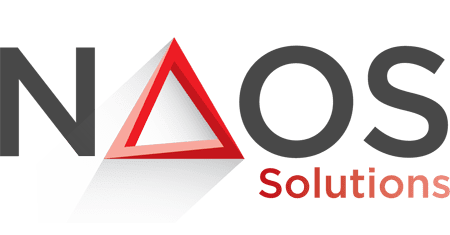HR challenges are often the biggest roadblocks fast-growing companies face when trying to scale strong teams quickly. You want to grow fast, but without the right HR systems, processes, and support in place, growth can easily outpace your ability to hire, retain, and empower top talent.

At NAOS Talents, we understand how growth-driven businesses can hit turbulence as they scale. From chaotic talent acquisition and ineffective onboarding to culture drift and operational overload, we’ve seen firsthand what makes or breaks high-growth teams.
In this article, we’ll show you how to overcome common HR challenges with clear, scalable strategies—so you can build high-performing teams without compromising on speed or quality.
CORE HR CHALLENGES IN FAST-GROWING COMPANIES
A 2023 research study suggests that fast-growing companies are more likely to experience higher rates of employee burnout and dissatisfaction. Here are the five most critical HR challenges fast-growing companies must address to build sustainable, high-performing teams.
Talent Acquisition At Scale
Recruiting a handful of great candidates is difficult. Doing it at scale, without compromising on quality, is even harder.
In hyper-growth environments, hiring needs can outpace recruiting capacity. For instance, stable organizations have average hiring times of 62 to 67 days, while fast-growing companies hire within 20 to 44 days. HR teams must fill roles rapidly while competing for top talent in an increasingly tight labor market.
Fast-growing companies also tend to lack structured recruiting processes, relying on ad hoc decisions rather than a clear talent acquisition strategy. Only 15% of hiring leaders feel 100% confident in their hiring decisions at the time of hire. This leads to inconsistent hiring standards, culture misfits, and bottlenecks in high-priority roles.
Maintaining Culture During Rapid Expansion
Organizational culture is often easy to maintain in small teams, but it can be the first casualty of rapid growth. As new hires flood in, the original values, norms, and communication styles can get lost or diluted.
Globally, only about 23% of employees feel engaged and aligned with company values. Leaders often underestimate how challenging it is to scale not just people, but also a shared purpose. When culture isn’t intentionally protected and communicated, the team becomes fragmented, which affects collaboration, engagement, and trust.
Remote and hybrid arrangements introduce new complexity and opportunity for organizational culture. According to Eagle Hill Consulting, 67% of employees feel that remote work enhances culture, while only 30% said their employer had asked for their input on flexibility arrangements.

This underscores two key points: remote work can deepen cultural engagement for many, but only when employees are included in designing how that work looks. Without that buy‑in, even well‑intentioned policies can lead to confusion, misalignment, and erode trust, particularly if office-based and remote staff aren’t equally heard and valued.
Onboarding New Employees Quickly And Effectively
As hiring accelerates, the onboarding process also takes a hit. Poor or rushed onboarding not only delays productivity but also increases early attrition.
New hires require structured, scalable onboarding processes that provide them with clarity, connection, and context quickly. However, most fast-growing teams struggle to maintain consistent onboarding across departments or locations. Effective onboarding must extend beyond IT checklists and integrate role clarity, culture, tools, and support from the immediate manager.

Employee Retention Under Pressure
The pace of change in fast-growing companies is relentless, and that can lead to burnout, disengagement, and turnover. Specifically, the technology sector experiences turnover rates ranging from 20% to 25% in 2025, compared to the global average of 13.5%.
Many employees in these environments face unclear roles, shifting goals, and weak managerial support. As performance pressure mounts, retention strategies often fall short because they’re reactive rather than proactive.
Retention requires more than just a good salary. It also demands investment in career development, mental health support, and transparent communication. Ignoring this leads to constant churn, which stalls momentum and puts further strain on HR and team leaders.
Scaling HR Operations To Support Business Growth
As employee numbers grow, manual HR systems become unsustainable. Key operations, such as payroll, benefits, compliance, and performance reviews, become error-prone or delayed, which can affect employee trust and legal standing.
To keep pace, teams must adopt scalable HR technology that enables automation, data tracking, and informed decision-making. In some cases, HR outsourcing solutions can fill temporary gaps while internal capacity is being built up. The goal is to build a scalable HR infrastructure that supports business expansion, rather than slowing it down.
STRATEGIC APPROACHES TO BUILDING STRONG TEAMS FAST
To keep pace with rapid expansion, HR leaders must avoid reactive fixes and adopt a forward-thinking, scalable approach to team building. Here are some strategies to keep in mind.
Building A Proactive Talent Acquisition Strategy
High-growth companies can’t afford to wait for vacancies to arise before recruiting. A proactive talent acquisition strategy enables HR teams to anticipate future needs, build robust candidate pipelines, and engage top talent well in advance of urgent role openings.
To make this actionable, HR leaders can use the Eisenhower Matrix—a simple yet powerful tool that sorts roles based on urgency and importance:
- Important & Urgent: Fill immediately—critical roles where delays could impact operations or revenue.
- Important but Not Urgent: Start pipelining—strategic hires needed for future initiatives (e.g., upcoming expansion).
- Urgent but Not Important: Utilize short-term solutions, such as contractors or temporary staffing.
- Neither Urgent nor Important: Delay or reevaluate the necessity of these roles.
This method ensures that hiring efforts are focused on roles that truly drive business impact, rather than reacting to vacancies with panic hiring.
This matters more than ever: 74% of employers in 2025 report difficulty finding the skilled talent they need, making it essential to stay ahead. Companies with proactive strategies aligned to business goals have reduced their time-to-hire by 33%, giving them a competitive edge in tight labor markets.
Investing In Scalable Onboarding Systems
Effective onboarding at scale is about designing systems that replicate quality at volume. Research shows that structured and scalable onboarding can increase employee retention by 52% and boost productivity by 60%.
A scalable onboarding process includes:
- automated preboarding,
- self-serve knowledge hubs,
- manager checklists,
- feedback loops.
Companies that do this well see faster ramp-up times and stronger engagement. For example, Texas Instruments reported that after revamping their onboarding process, new employees reached full productivity two months faster compared to those following the traditional onboarding program.

Reinforcing Culture Through Consistent Values And Communication
Culture doesn’t scale on autopilot. Leaders must actively reinforce values across onboarding, performance reviews, and recognition programs.
When values are clear, codified, and reinforced at every level, employees stay connected. A Gallup study found that employees at companies with strong cultural alignment are 63% less likely to seek new job opportunities.
Frequent and intentional communication is key to this. Beyond formal town halls or pulse surveys, accessible ways to embed culture include:
- Weekly all-hands emails from leadership that recap wins, challenges, and reinforce values.
- Slack channels or Teams groups dedicated to recognition, feedback, and values-based shout-outs.
- Culture moments in team meetings, where a teammate shares how a company value was demonstrated.
- Quick video messages from execs explaining big decisions or celebrating milestones.
- Anonymous feedback boxes (digital or physical) to keep a pulse on team sentiment.
These small, repeatable actions create rhythm and visibility, ensuring that culture is something employees live daily, not just hear about occasionally.
Planning For Workforce Needs, Not Just Reacting
Strategic workforce planning ensures that headcount growth is intentional, not reactive. This means predicting talent gaps based on product roadmaps, funding rounds, and expansion goals.
Effective planning maps out future roles, skills, and leadership needs. It also highlights when to hire, when to promote, and when to reskill. This approach reduces over-hiring, under-utilization, and panic hires, which are common in high-velocity companies.
Leveraging HR Technology And Automation
A manual HR system may have worked for you so far, but it can collapse under rapidly scaling HR operations. In fact, HR staff spend as much as 57% of their time on administrative tasks.
That’s where automation steps in. A Human Resources Information System (HRIS) is a digital platform that integrates key HR functions, such as recruiting, onboarding, payroll, benefits, and compliance, into a single, scalable system.

By utilizing HRIS platforms, companies can streamline tasks such as applicant tracking, onboarding workflows, and performance reviews, while also gaining valuable insights through workforce analytics tools. The result? A more agile HR function that supports business growth rather than slowing it down.
THE ROLE OF HR OUTSOURCING IN MANAGING GROWTH
As companies scale quickly, internal HR teams may struggle to keep up with the demand for recruitment, compliance, training, and administrative support. This is where HR outsourcing (HRO) becomes a great solution.
How HRO Partners Can Fill Gaps In Capacity And Expertise
Fast-growing companies often lack the time to establish fully functional HR departments before demand surges. HRO firms bring immediate capacity and specialized expertise to areas where internal teams are stretched thin or lack experience.
In 2025, approximately 62% of organizations outsource at least one HR function. Commonly outsourced functions include:
- High-volume recruitment process outsourcing (RPO)
- Payroll and benefits administration
- Compliance and labor law management
- Onboarding and training operations
These services enable internal HR teams to focus on strategic initiatives, such as culture, retention, and leadership development. Meanwhile, the HRO specialists can handle routine or highly technical tasks.
Outsourcing also helps reduce compliance risk. Since HRO providers stay up-to-date with regulations, they reduce the likelihood of costly errors in high-stakes areas, such as contracts, benefits, and labor laws.
Case Examples Or Benefits Of Outsourcing In Hyper-Growth Phases
In hyper-growth phases, such as post-funding rounds, product launches, or international expansions, outsourcing can be the key to achieving both stability and scale simultaneously.
For example, after facing high turnover (35%) and fragmented HR processes, Kemp & Lauritzen outsourced HR to SAP SuccessFactors. They also used a custom fast-hire app to streamline recruitment and centralize workforce data. As a result:
- Turnover dropped to under 28%
- Voluntary exits decreased by a third
- Onboarding satisfaction improved to 4.0/5
- 80% of their largely deskless workforce engaged with the new HR portal
In another case, ARC Health faced challenges after expanding from 50 to 1,000 employees in just two years. As a result, they switched to a scalable HRIS system and outsourced HR support via managed services. This transition reduced escalating costs, improved benefits design, and maintained operational continuity.
CONCLUSION
Fast growth phases are exciting, but they also expose every weakness in your HR strategy. Without strong systems for hiring, onboarding, culture, and workforce planning, even the most promising companies risk burning out teams and stalling momentum.
Luckily, NAOS Solutions helps fast-growing companies in Egypt close HR gaps with expert-led outsourcing solutions tailored to their scale, pace, and goals. Contact NAOS today to discover how our HR solutions can support your growth.

